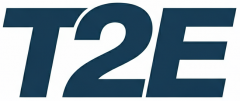I thought the economy was doing well. Do software companies laying off employees relate to the extensive hiring these companies did during COVID, or is there another reason?
There are several reasons why software organizations may still be laying off employees, despite the economy’s positive state.
One reason for laying off employees is related to the hiring surge many companies experienced during the COVID-19 pandemic.
As businesses quickly adapted to remote work and expanded digital operations, demand for new software and technology solutions surged. This led many software organizations to quickly ramp up their hiring in order to keep up with this demand.
However, as we move into a post-pandemic world, some of this rapid growth has slowed down. Companies have adjusted to the new normal and may not need as many employees as they did during the early pandemic stages. This could result in some positions becoming redundant and ultimately leading to layoffs.
Another factor contributing to laying off employees is the trend of automation and artificial intelligence.
With advancing technology, there’s more focus on automating tasks once done by humans. This can lead to job displacement for certain roles and functions within software organizations.
Additionally, companies are constantly evolving and re-evaluating their needs. They may find they need fewer employees in certain departments or areas due to changes in market demand or shifts in strategic focus. In order to remain competitive, organizations must continually adapt, which may result in restructuring and downsizing.
Furthermore, the software industry is highly competitive and constantly evolving.
Companies are constantly seeking to innovate and improve their products and services in order to stay ahead of the curve. This can lead to volatility and uncertainty in the industry, contributing to periodic layoffs as companies restructure to stay competitive.
In conclusion, while the overall economy may be doing well, there are still various factors that can contribute to software organizations laying off employees. In the wake of COVID-19, automation, and industry shifts, companies must regularly assess and adjust for long-term success. Prioritizing employee well-being and support during changes is crucial. Individuals should stay informed on industry trends and be ready to adapt to maintain job security in the ever-evolving software development world. Overall, it is a complex issue that requires constant attention and proactive measures from both companies and employees.
While there’s no single reason why software organizations continue to lay off employees, various factors contribute, making it crucial for everyone involved to stay informed and adaptable to navigate these challenges. With ongoing growth and innovation, this trend is likely to continue, emphasizing the importance of staying updated with relevant skills and knowledge. As technology advances, both companies and employees must adapt to thrive in this fast-paced, competitive industry.
Click here for a post on the pandemics influence on technology.





